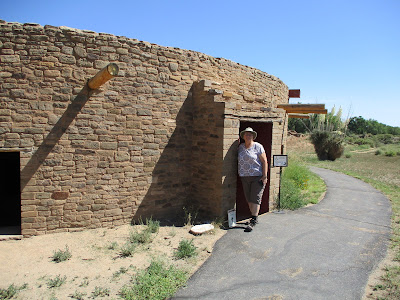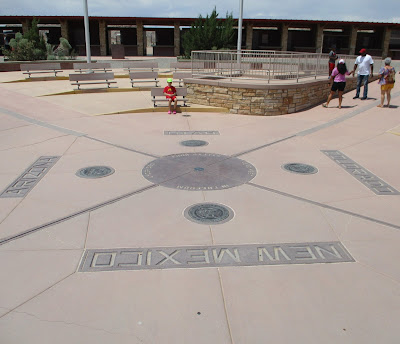With all the sandstone, there has to be arches. We picked up a brochure that gave directions to many of the little-known arches around Aztec, New Mexico. The arches are located via oil and gas lease unimproved dirt roads. There are no signs or postings for the arches, so, we went on a hunt to find some of them.
Arch Rock
Arch Rock is about seven and half miles off the paved highway.
Kurt hiked around the deep ravine so he could be up close and personal.
UFO Landing Site
Some people believe that on March 25, 1948, a spacecraft crashed on this mesa. A high security recovery operation removed the remains and took them to Los Alamos Laboratory for study. It was reported the space craft was about 100 feet in diameter and eighteen feet tall. All the occupants, maybe 16 total, died in the crash.
Since the crash site was close to Arch Rock we stopped but saw no evidence.
This boulder near the crash site, looks like a statue of Alf, the alien, from the 1980's sitcom of the same name.
Burns Arch
Peephole Arch
Keyhole Arch
We found this arch directly below Petroglyph Arch.
Petroglyph Arch
Rooftop Arch
Navajo Dam
The construction of Navajo Dam began in 1957 and was complete in 1962 forming Navajo Lake. We saw two active osprey nests around the dam.
The Navajo Dam impounds the San Juan River.
The earthen dam is 3,648 feet wide and 402 feet high.
The water is mainly used for local irrigation and recreation.
Navajo Lake Marina
Downstream from the dam, fly fisherman were along the San Juan River in Navajo Lake State Park.






















































